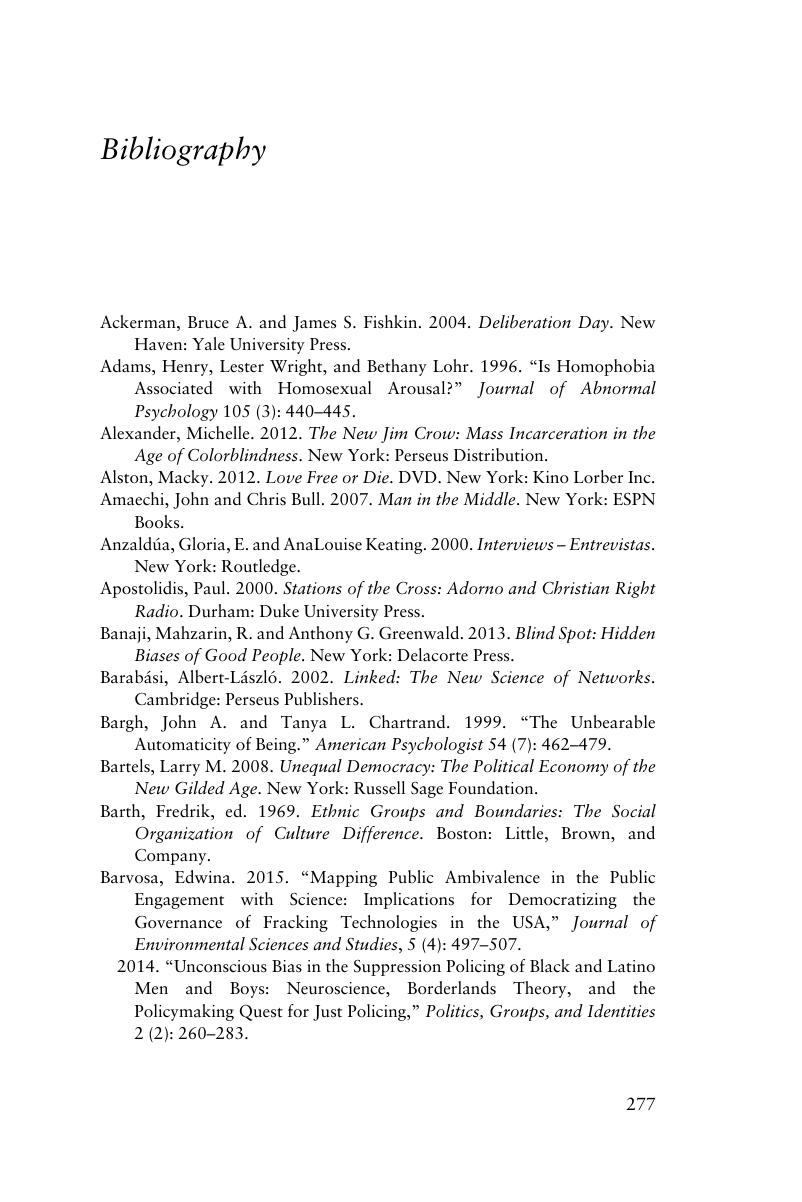Book contents
- Deliberative Democracy Now
- Theories of Institutional Design
- Deliberative Democracy Now
- Copyright page
- Dedication
- Contents
- Acknowledgments
- Introduction
- 1 Theoretical Overview
- 2 Three Catalysts of a Deliberative System
- 3 Social Networks in Deliberative System Growth and Implementation Power
- 4 Overcoming Cognitive Obstacles: Implicit Bias, Identity Threats, and Fear
- 5 Hidden Quandaries and Implications for Deliberative Democracy
- Conclusion
- Bibliography
- Index
- References
Bibliography
Published online by Cambridge University Press: 02 June 2018
- Deliberative Democracy Now
- Theories of Institutional Design
- Deliberative Democracy Now
- Copyright page
- Dedication
- Contents
- Acknowledgments
- Introduction
- 1 Theoretical Overview
- 2 Three Catalysts of a Deliberative System
- 3 Social Networks in Deliberative System Growth and Implementation Power
- 4 Overcoming Cognitive Obstacles: Implicit Bias, Identity Threats, and Fear
- 5 Hidden Quandaries and Implications for Deliberative Democracy
- Conclusion
- Bibliography
- Index
- References
Summary

- Type
- Chapter
- Information
- Deliberative Democracy NowLGBT Equality and the Emergence of Large-Scale Deliberative Systems, pp. 277 - 290Publisher: Cambridge University PressPrint publication year: 2018

